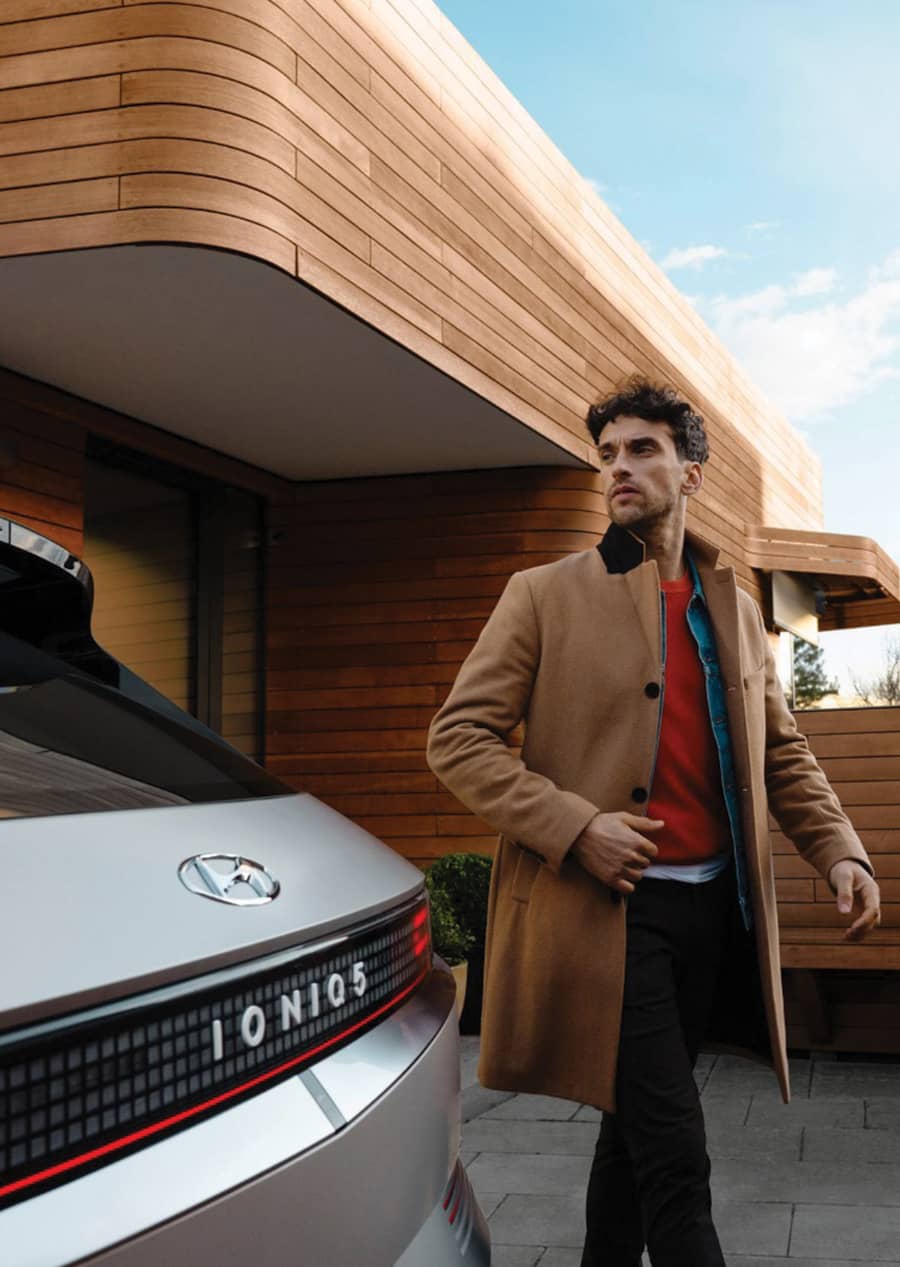-
-
-
-
-
Currency
culture
The Time Has Come For You (Yes, You) To Invest In An Electric Vehicle


We know that climate action is about big and small, short- and long-term investments. Spending the weekend setting up a worm farm and designing a 50-year financial plan around an ethical super fund.

Documented By: @bmwau
We know that climate action is about big and small, short- and long-term investments. Spending the weekend setting up a worm farm and designing a 50-year financial plan around an ethical super fund.
Somewhere in the middle of that scope sits your car. It won’t last a lifetime but, for some people, this is one of the biggest investments they’ll ever make, up there with buying a house. It’s a lot to consider, especially if you want that purchase to be better for the environment.
We’ve known for a while now that buying an electric vehicle is the most responsible way to look out for the planet (while still balancing the convenience of not catching three buses to work every day). Also, as far as environmental action goes, cruising around in an EV is one of the sexier commitments you can make. Let’s be real though: for most of us, actually doing that has felt like a pipe dream.
But that’s all changing. Even Australia, a country that has notoriously lagged behind other global nations due to prohibitively high costs, accessibility issues and a lack of infrastructure and incentives, is starting to shift. Owning an EV is becoming less of a fantasy. In fact, it could be the next big thing you (yes, you) invest in. Here’s why.
Owning an electric vehicle is set to become the norm for new car buyers
Tesla delivered the first highway-legal electric car – the Roadster – in 2008. The first-generation model was based on a Lotus Elise chassis, designed to make people see the possibilities of EVs. But back then, to actually own one, buyers were facing a six-figure expenditure. Nowadays, you can purchase an EV for a lot less.
The cheapest model currently available in Australia is MG’s ZS EV, selling for $44,990 drive-away. Coming in a close second is the BYD Atto 3 compact SUV, built by one of China’s biggest carmakers and due to arrive in Australia within the next six months. The entry-level variant starts from $44,381 before on-road costs (which push it above $45k in all states except Tasmania).
That sounds like a lot, but it’s still less than the two best-selling models of 2021. And it’s nearly on a par with the average spend on a new car in Australia, which a survey from Canstar Blue puts at $40,729.
While the price might be more palatable, these don’t feel like your dinky budget options. Entry-level models such as the ZS have been praised for their responsive acceleration, light steering, well-timed power delivery and balanced driving experience. Plus, all EVs deliver on that signature silence inside the cabin. Meaning you no longer need to engage in the dreaded podcast vs. road noise battle.
In other good news, EV prices are likely to drop even more in the next decade as the market (and competition) expands. Growth in EVs topped the global car market in 2021 and some of the most well known carmakers have pledged to stop production of internal combustion engine (ICE) cars altogether within the next decade.
These aren’t just the luxury brands that have previously dominated the EV market either. We’re now seeing companies that sell mainstream models investing heavily in the industrial transition needed for the coming decades. Among the brands are several owned by BMW (including Mini and Rolls-Royce), Honda, Audi, Ford, Renault, Hyundai and Nissan.
Not to overstate a point, but again, these are major car companies saying that, from 2030, they will stop making petrol and diesel cars and will only be producing electric cars.
What’s more, research suggests that electric cars and vans will be cheaper to produce than conventional fossil fuel–powered vehicles by 2027 (some say even earlier). EV educator and transition specialist Bryce Gaton predicts that, in around six or seven years, “the bottom of the market new EVs would be priced around $25,000”. Over the next decade, new EVs will also flow into a larger second-hand market, improving accessibility for even more people.
This means that not only will you be enjoying a chill, comfortable ride, but also traffic in general will become less hectic as these non-polluting, quiet machines begin to dominate. Nice to know that even gentle-hearted pedestrians and cyclists are getting something out of this all.
Carmakers are stepping up... But is the Australian Government?

Documented By: @hyundaiaus
Carmakers are stepping up... But is the Australian Government?
Countries like the United States, Norway and China have all seen strong governmental support for EVs, including investment in charging networks and monetary incentives for both commercial and private buyers of electric vehicles. We were slower to get moving in Australia up until last year.
Following the COP26 summit, prime minister Scott Morrison released the Future Fuels and Vehicles Strategy. It included a plan to spend $250m to build charging stations for heavy commercial vehicles, passenger cars and households.
While the plan didn’t include any incentives for new EV buyers, that’s where state governments have stepped up, implementing their own subsidies. New South Wales for example is offering $3,000 cash rebates for the first 25,000 new EVs sold after 1 September 2021. Other states are offering stamp duty exemptions and refunds and free registration.
According to the Australian Financial Review, state incentives have been a big factor in Australia’s growth in EVs over the last year. Sales have more than tripled in the past 12 months, with over 20,000 electric cars sold in the last year (up 6,900 from 2020).
EVs currently make up around 1.6 per cent of new car sales in Australia. It sounds low but consider this: in 2011 in Norway, EVs only made up less than two per cent of new car sales. A combination of cheaper electric vehicles and generous financial incentives saw that figure rise dramatically over the next decade, with EVs now making up more than three quarters of all new car sales in the country. More choice, supportive infrastructure and stronger federal rebates could certainly put Australia on the same electric track. Combine that with Australia’s growing solar power and we will see wins for both the environment and our bank balances.
More places to plug in and improvements in battery technology

Documented By: @bmwau
More places to plug in and improvements in battery technology
With superior drivability and comfort, EVs are the stuff of road trip dreams. But previously, potential buyers have been concerned about adequate charging infrastructure to ensure convenience and driving range over long distances. Thankfully, again, that’s one anxiety recent government investment has gone a long way to address.
The Australian government’s Future Fuels and Vehicles Strategy includes EV infrastructure in 400 businesses, 50,000 households and 1,000 public charging stations. New South Wales (the country’s most populous state) has pledged to spend $171 million on EV chargers over the next four years. While Victoria (the second most populous state) plans to spend $29 million on charging infrastructure in regional areas and to replace government cars by 2023. All in all, a significant financial investment in EVs around the country.
Technology is also catching up with battery performance. Electric vehicles largely run on lithium-ion batteries and the distance a car can travel on a single charge has previously been an issue for keen buyers. Last year, we saw the average EV range go beyond 250 miles (400 kilometres) for the first time. At the top end of the market, high performing EVs have now reached 400 miles (640 kilometres) with one charge. New battery chemistry and development will continue to improve that range and make batteries safer and more efficient.
How buying an electric vehicle could save you money
Another reason we think an EV is a smart and worthwhile investment is the fact that driving electric saves money in the long term. In Australia, fuel prices have skyrocketed, with drivers facing the biggest 12-month increase in more than 30 years in 2021. Global oil prices are also at their highest point since 2014. EV owners who can charge their cars using their own solar panels pay zero.
Even without access to renewable energy, EVs run at an equivalent to 0.33 cents per litre, which can save around $1,600 in fuel costs each year. Looking at an overall comparison, EVs are said to be around 70 per cent cheaper to power than petrol cars.
There are also savings to be found in driving a car with fewer parts as it tends to have lower maintenance costs. A report by the analytics firm We Predict found that, after 36 months on the road, the service costs for EVs were 31 per cent lower compared to similar petrol-based vehicles.
Comparisons will always vary depending on how you use your car and what kind of ICE vehicle you’re comparing an EV to. But with all the factors mentioned above, it’s hard to dispute that an EV can save you money in the long term.
The future is looking electric
EVs once felt like a luxury product that only the wealthy could afford. But thanks to a growing market and improved infrastructure, this daydream isn’t only starting to feel like a reality: it’s also emerging as the smartest financial investment for new car buyers. And one that more average earners (yes, that means you) can soon consider buying. Now the only concern that remains is this: which of your mates are you going to let into your cute new ride?

ABOUT US
CUSTOMER CARE
EDITORIAL & RIISE PRODUCTIONS
© 2024 RIISE, All Rights Reservedjoin riise's mailing list for 15% off your first order.Availability







